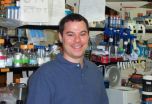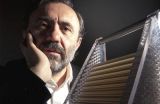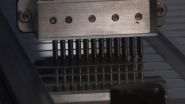(Press-News.org) Researchers from Mount Sinai School of Medicine have found that when one copy of the SHANK3 gene in mice is missing, nerve cells do not effectively communicate and do not show cellular properties associated with normal learning. This discovery may explain how mutations affecting SHANK3 may lead to autism spectrum disorders (ASDs). The research is currently published in Molecular Autism.
"We know that SHANK3 mutation plays a central, causative role in some forms of autism spectrum disorders, but wanted to learn more about how it does this," said Joseph Buxbaum, PhD, Director of the Seaver Autism Center and Professor of Psychiatry, Neuroscience and Genetics and Genomic Sciences at Mount Sinai School of Medicine. "These data provide critical insight into the mechanism behind the development of the cognitive and social changes associated with autism."
Previous research has shown that gene mutation in SHANK3 is associated with delayed language abilities, learning disability, and ASDs. A team of researchers at the Seaver Autism Center for Research and Treatment at Mount Sinai School of Medicine and the Intramural Research Program of the National Institute of Mental Health wanted to better understand the connection between the SHANK3 mutation and subsequent brain and behavioral difficulties. They examined mice genetically engineered to lack one copy of SHANK3, similar to patients who have a mutation in one copy of SHANK3, and compared the nerve cell activity of these mice with that of mice in a control group that did not have the mutation. They also examined social behaviors in these mice.
Mount Sinai scientists looked at brain activity in vitro and worked with the NIMH Laboratory of Behavioral Neuroscience, led by Jacqueline Crawley, PhD, to evaluate behavioral differences in the two groups of mice. The research team observed impaired communication between nerve cells in the mice with the SHANK3 mutation. They also found altered functional and structural plasticity in nerve cells, which is a cellular measure of the flexibility that occurs during learning, and in the synapses—the points of contact between nerve cells. Behavioral observations indicated reduced male-female social interactions in the SHANK3 mutant mice. The studies identify clear brain targets that can implicate drugs that can be therapeutic.
"These results have helped us determine a pathological mechanism behind neurodevelopmental disorders like autism," said Dr. Buxbaum. "Currently, the only therapeutic options for people with ASDs are to treat the symptoms of the disease, like anxiety or aggression. Armed with this breakthrough, we can begin testing drug compounds that treat the disease at its root cause, improving nerve cell communication. We hope and expect that, like other developmental disorders such as Fragile X syndrome, the use of mouse models will lead directly to clinical trials that can benefit patients."
INFORMATION:
The study was supported by a grant from the Seaver Foundation and a special multi-site grant awarded to co-authors Drs. Buxbaum, Crawley, Hof and Zhou from the Simons Foundation.
Autism and the ASDs are complex neurobiological disorders that inhibit a person's ability to engage in reciprocal social interactions and to develop social relationships, and are often accompanied by behavioral challenges. ASDs are diagnosed in one in 110 children in the United States, affecting four times as many boys as girls. The Centers for Disease Control and Prevention has called the high prevalence of ASDs a national public health crisis. A specific genetic disorder is identified in at least 15 to 25 percent of people with an ASD, and the proportion with an etiological diagnosis will continue to increase with the more widespread use of genetic testing.
The Seaver Autism Center provides comprehensive assessment and care for people with autism spectrum conditions. It includes a multi-disciplinary team of experts that use genetics, molecular biology, model systems, neuroimaging, and therapeutics to improve patient care and to develop the next generation of treatments. The Seaver Autism Center provides opportunities to participate in research studies aimed at understanding the causes of autism spectrum conditions and developing treatments. For more information, visit www.SeaverAutismCenter.org.
The article is available on the journal website.
About The Mount Sinai Medical Center
The Mount Sinai Medical Center encompasses both The Mount Sinai Hospital and Mount Sinai School of Medicine. Established in 1968, Mount Sinai School of Medicine is one of few medical schools embedded in a hospital in the United States. It has more than 3,400 faculty in 32 departments and 15 institutes, and ranks among the top 20 medical schools both in National Institute of Health funding and by U.S. News & World Report. The school received the 2009 Spencer Foreman Award for Outstanding Community Service from the Association of American Medical Colleges.
The Mount Sinai Hospital, founded in 1852, is a 1,171-bed tertiary- and quaternary-care teaching facility and one of the nation's oldest, largest and most-respected voluntary hospitals. U.S. News & World Report consistently ranks The Mount Sinai Hospital among the nation's best hospitals based on reputation, patient safety, and other patient-care factors. Nearly 60,000 people were treated at Mount Sinai as inpatients last year, and approximately 530,000 outpatient visits took place.
For more information, visit www.mountsinai.org. Follow us on Twitter @mountsinainyc.
Mount Sinai researchers develop mouse model to help find how a gene mutation leads to autism
2010-12-17
ELSE PRESS RELEASES FROM THIS DATE:
Tools used to decipher 'histone code' may be faulty
2010-12-17
CHAPEL HILL, N.C. – The function of histones -- the proteins that enable yards of DNA to be crammed into a single cell -- depends on a number of chemical tags adorning their exterior. This sophisticated chemical syntax for packaging DNA into tight little coils or unraveling it again -- called the "histone code" -- is the latest frontier for researchers bent on understanding how genetics encodes life.
But recent research from the University of North Carolina at Chapel Hill has found a number of issues with histone antibodies, the main tools used to decipher this code, ...
A 'spin ratchet': A new electronic structure for generating spin current
2010-12-17
A research team from the Institut Català de Nanotecnologia (ICN), in Barcelona, has demonstrated a device that induces electron spin motion without net electric currents, a key step in developing the spin computers of the future. The results are published in the Dec 17 issue of the journal Science. The authors are Marius V. Costache and Sergio O. Valenzuela, an ICREA Professor who is leader of the Physics and Engineering of Nanodevices Group at ICN.
Spintronics is a branch of electronics that aims to use the electron spin rather than its charge to transport and store ...
Better spaces for older people
2010-12-17
The research project 'Older People's Use of Unfamiliar Space' (OPUS) examined the strategies used by older people to find their way in unfamiliar spaces as pedestrians and users of public transport. As part of the research, older people were shown town scenes and pedestrian routes and gave feedback on signposting, ease of navigation and general impressions. Their heart rates were measured to monitor stress levels. Participants were also taken to a town centre to walk through the same routes in person.
Initial findings show:
Signs are of limited use even in unfamiliar ...
Genome code cracked for most common form of pediatric brain cancer
2010-12-17
Scientists at the Johns Hopkins Kimmel Cancer Center have deciphered the genetic code for medulloblastoma, the most common pediatric brain cancer and a leading killer of children with cancer. The genetic "map" is believed to be the first reported of a pediatric cancer genome and is published online in the December 16 issue of Science Express.
Notably, the findings show that children with medulloblastoma have five- to tenfold fewer cancer-linked alterations in their genomes compared with their adult counterparts, the scientists say.
"These analyses clearly show that ...
CHOP experts collaborate in gene survey of childhood brain cancer; intriguing clues found
2010-12-17
Pediatric cancer researchers at The Children's Hospital of Philadelphia contributed important expertise to a new landmark study of medulloblastoma, a type of brain tumor typically found in children. The large multicenter study defines the genetic landscape of this cancer, and holds intriguing clues to gene changes on signaling pathways that may become fruitful targets for future therapies.
The most common cancerous brain tumor in children, medulloblastoma is, fortunately, rare. However, it causes significant mortality, and survivors may suffer serious long-term side effects ...
Iowa State, Ames Lab physicist developing, improving designer optical materials
2010-12-17
AMES, Iowa – Advancements in fabrication technologies may lead to superlenses and other designer optical materials, according to an Iowa State University and Ames Laboratory physicist.
In an article titled "Improving Metamaterials" published in the Perspectives section of the Dec. 17 issue of the journal Science, Costas Soukoulis and Martin Wegener write about the man-made materials designed to deliver certain properties not found in nature.
Soukoulis is an Iowa State University Distinguished Professor and Frances M. Craig Professor of Physics and Astronomy and a senior ...
Liver cancer in cirrhotic patients effectively treated with radiofrequency ablation
2010-12-17
Researchers from Italy determined that radiofrequency ablation (RFA) is a safe and effective therapy for managing hepatocellular carcinoma (HCC) in cirrhotic patients. The high repeatability of RFA is advantageous in controlling recurrences of cancerous tumors in the liver. Results of this 10-year retrospective study are available in the January 2011 issue of Hepatology, a journal published by Wiley-Blackwell on behalf of the American Association for the Study of Liver Diseases (AASLD).
HCC is the third leading cause of death from cancer worldwide and according to the ...
Scientists discover powerful biomarker panel for the early detection of breast cancer
2010-12-17
In the war on cancer, perhaps there is nothing more powerful in a physician's arsenal than early detection. Despite recent advances in early detection and treatment, breast cancer remains a common and significant health problem in the United States and worldwide. Approximately one in ten women will get breast cancer in their lifetime and more than half of women with late stage cancer (II and III) have no cure or effective therapeutic available.
Using a new, powerful method for rapidly screening molecules associated with disease, proteomics expert Joshua LaBaer and colleagues ...
Study shows garlic could protect against hip osteoarthritis
2010-12-17
Researchers at King's College London and the University of East Anglia have discovered that women who consume a diet high in allium vegetables, such as garlic, onions and leeks, have lower levels of hip osteoarthritis.
The findings, published in the BMC Musculoskeletal Disorders journal, not only highlight the possible effects of diet in protecting against osteoarthritis, but also show the potential for using compounds found in garlic to develop treatments for the condition.
A relationship between body weight and osteoarthritis was previously recognised, although it ...
Lost images of 'human exhibits' in Britain discovered
2010-12-17
A University of Leicester researcher has discovered two photographic images, presumed lost, of native Americans brought to Britain by Roger Casement a century ago.
Dr Lesley Wylie, Lecturer in Latin American Studies in the School of Modern Languages, University of Leicester, made the discovery during her research for a book on the Putumayo, a border region in the Amazon. Her book forms part of the AHRC-funded research project, American Tropics: Towards A Literary Geography, based at the University of Essex.
The photographs were found among a photographic collection ...



